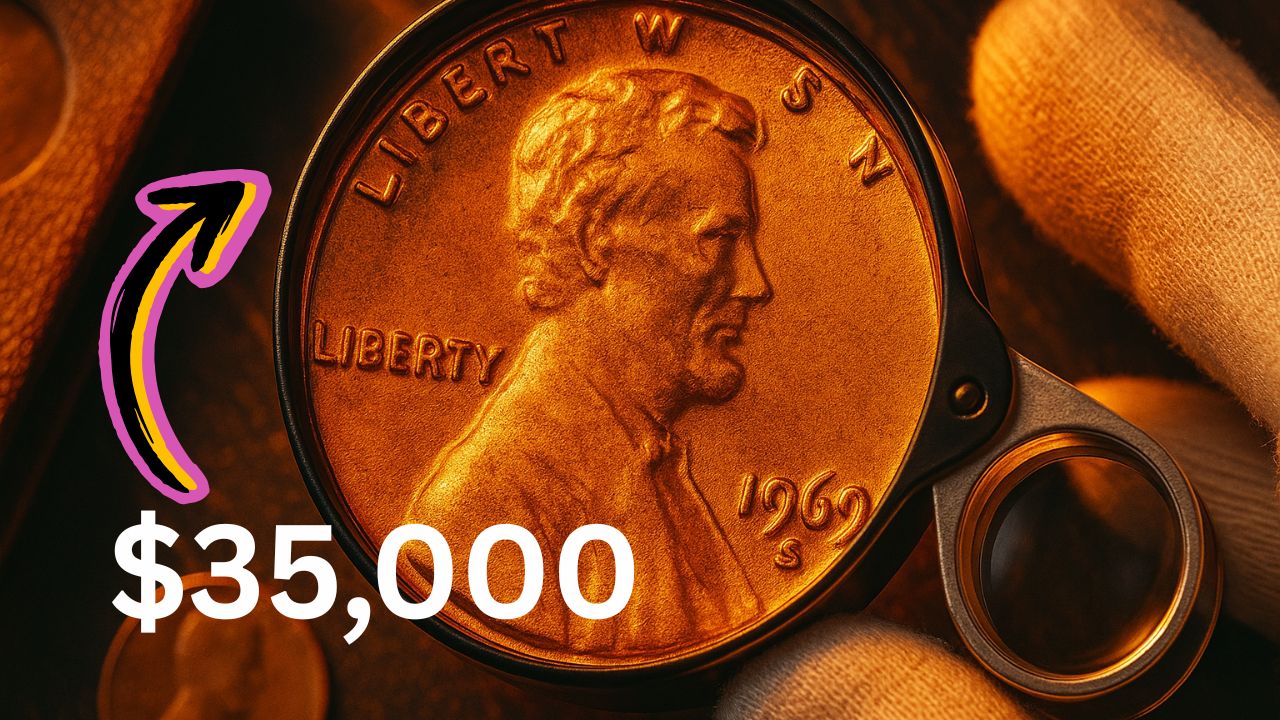The 1969‑S Lincoln cent featuring a Doubled Die Obverse (DDO) is one of the rarest U.S. modern mint errors. It isn’t the well‑known 1955 DDO; this San Francisco “S” mint variant surfaced later, but with far fewer examples—most estimates place its existence between 30 to 50 coins.
Why it Happened
During the die creation process (known as “hubbing”), the die received two misaligned imprints—resulting in dramatic doubling on elements like “IN GOD WE TRUST,” “LIBERTY,” and the date (1969) itself.
Unlike machine doubling, the mint mark “S” remains sharp, since it was punched in separately after hubbing, distinguishing it from counterfeit or strike‑misaligned coins.
The Intriguing Origin & Detection
Counterfeits compounding confusion
Coin counterfeiters Roy Gray and Morton Goodman created fake 1969 DDO pennies using an electric‑eroding machine. The U.S. Secret Service seized many of these forgeries during a 1969 sting—but genuine 1969‑S DDO pennies were mistakenly caught and even destroyed under suspicion .
Discovery timeline
- July 1970: Cecil Moorhouse and Bill Hudson uncover original 1969‑S DDO cents.
- The Secret Service initially ordered many destroyed, until the U.S. Treasury later made corrections .
Rarity & Population
- Estimated survivors: around 30–50.
- Certified by grading services: fewer than 40 across PCGS, NGC, ANACS combined.
- Why so rare: Apart from low mint numbers, the Secret Service’s inadvertent destruction further diminished surviving specimens .
Grading & Market Prices
| Grade (Red/MS) | Known Sales & Dates | Price Realized |
|---|---|---|
| MS‑64 RD | Heritage (Jan 2008) | $126,500 |
| Stacks Bowers (Mar 2018, Baltimore) | $126,000 | |
| MS‑65 RD (CAC) | Finest known, PCGS, sold (Jan 2023) | $601,875 |
| AU‑50 | Texas find, PCGS graded | ~$40,000 |
| VF‑20 | Sotheby’s (Dec 1998) | $9,900 |
Record-breakers
- The current highest price: $601,875 for an uncirculated MS‑65 Red specimen sold on Jan 22, 2023.
- Secondary high marks: MS‑64 pieces fetch around $126 K, and even AU‑50 coins can clear $40 K–$50 K .
Key Identifying Features
- Strong doubling on date, “IN GOD WE TRUST”, and “LIBERTY.”
- Mint mark is not doubled—a clear indication of hub doubling vs. strike or machine doubling.
- Date doubling direction: southeast shift, particularly deep on the digits “1969” .
- Surface coloration: Mint State examples appear satiny brown to orange‑brown, attractively toned.
Why It’s a Collector’s Goldmine
- Ultra-low survival rate: maybe 30–50 specimens total.
- Historical drama: clash with Secret Service anti-counterfeiting efforts; confusion led to destruction of real coins.
- Market impact: prices soared as awareness spread—especially after high‑grade finds in 2008 and 2023 auctions .
- Collector mystique: Objects of cherrypicking—Tremonti’s 2007 find from a roll sold for $126,500 in 2008.
Summary of Facts & Figures
| Feature | Details |
|---|---|
| Mintage / Estimated survivors | S Mint, 1969; ~30–50 known examples |
| Graded examples | < 40 certified by PCGS, NGC, ANACS |
| Counterfeits & federal seizure | Forged by Gray & Goodman; Secret Service seized genuine coins |
| Mint State MS‑64 sale | $126,500 (Jan ’08) & $126,000 (Mar ’18) |
| Finest MS‑65 example sale | $601,875 (Jan 2023) |
| AU‑50 find value | ~ $40,000 |
| Lowest‑grade VF‑20 sale | $9,900 (Dec ’98) |
| Visual markers | Strong doubling on date, motto, “LIBERTY”; mint mark not doubled |
| Surface | Satiny chestnut-brown to deep copper-orange |
The 1969‑S Doubled Die Penny is not just a $35,000–$600,000 rarity; it represents how a mint’s fluke, combined with federal anti‑counterfeiting zeal, created one of the rarest and most dramatic modern U.S. coins.
With strong doubling, an untouched mint mark, and a story involving forgers, seizures, and destroyed specimens, it has enthralled collectors for over half a century.
If you’re sorting change or rolling through bank sticks of 1969‑S cents, keep your eyes peeled. Any authentic example—even low grade—could be your golden ticket.
FAQs
Q1: How can I tell a real 1969‑S DDO penny from a fake or machine‑doubled one?
Look for pronounced doubling on date, “IN GOD WE TRUST,” and “LIBERTY,” but no doubling on the “S” mint mark. Fakes often show doubled mint marks. Weak or flat doubling (with shelflike edges) is likely machine‑doubling.
Q2: What’s the value of a circulated 1969‑S DDO?
Even low‑grade circulated examples (e.g., VF‑20) have sold for $9,900 or more. Higher grade coins easily hit five or six figures.
Q3: Could there be more undiscovered ones out there?
Yes—though rare, roll‑searching continues to yield finds. A Michigan collector in 2007 found one in a 1969‑S roll, and small hoards have surfaced as recently as 2020 .
